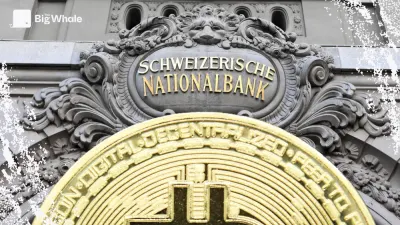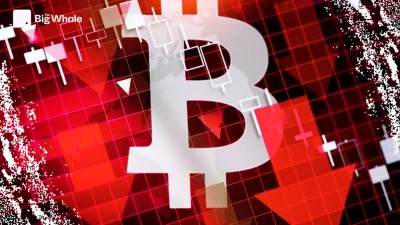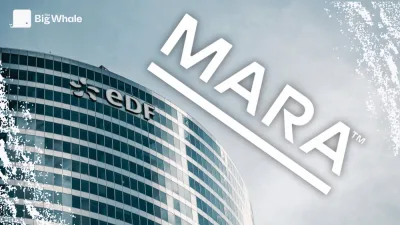TBW - Reserve Protocol Analysis (RSR), a complex alternative to traditional stablecoins

At a time when the global economy is facing a resurgence in inflation, confidence in fiat currencies is eroding in many countries, and decentralised innovation is constantly pushing back the boundaries of what is possible, the need for alternative monetary solutions is becoming ever more pressing. It is in this context that Reserve Protocol is attracting attention: an ambitious project that seeks to reinvent stablecoins by giving them not only real, asset-backed value, but also the ability to generate returns - all within a resolutely decentralised, modular and open-source framework.
The stated ambition is clear: to offer stable digital currencies that are resistant to hyperinflation, can be used in everyday commerce, and are capable of preserving users' wealth over time. But Reserve goes further: through its RTokens and DTFs (Decentralized Token Folios), the protocol aims to create a genuine monetary ecosystem, where each user can become an issuer of stablecoins or a manager of tokenized asset portfolios, with an integrated governance and revenue-sharing system.
In an industry still largely dominated by centralised stablecoins such as USDT or USDC, Reserve's approach - more complex, admittedly, but potentially more resilient and transparent - is worth a closer look. The protocol is not without its challenges: centralised governance, technical complexity, limited adoption... But it is already positioning itself as a new kind of monetary laboratory, where the ideas of financial sovereignty, yield and stability coexist in the same code.
>> Report stablecoins 2024: an ever-richer ecosystem
General presentation
The Reserve protocol allows the creation, without authorisation, of stablecoins called RTokens. These RTokens are backed by real, over-collateralised assets and can generate a return. They are issued in the form of ERC-20 tokens, compatible with the main EVM-type blockchains (such as Ethereum, Arbitrum or Base).
To create an RToken, the user must deposit a basket of tokenised assets in a protocol smart contract. These assets serve as collateral for the stablecoin issued. In return, the user can mint RTokens and use them for payments or transfers in real life.
An additional layer of security is provided by the staking of RSR tokens, which protect in the event of a default by one of the assets in the basket. Each RToken has its own governance system and a revenue-sharing mechanism defined by its creator.
The protocol's aim is ambitious: to offer an alternative to inflationary money, with a solid digital currency backed by assets and not created "out of thin air". Thanks to the return generated by collateral and a burn mechanism, some RTokens can even increase in value relative to their collateral basket.
Users can connect their wallet, mint RTokens, buy and store RSR, or invest in multi-chain DTF (Decentralized Token Folios) portfolios. These DTFs make it possible to diversify one's exposure to cryptos while generating passive income.
The protocol saw strong growth in 2024, with sustained monthly inflows. Peak activity was reached in July 2024, with $85 million in inflows. In March, the protocol even generated nearly $400,000 in fees.
But since the start of 2025, the trend has reversed. TVL (total locked value) has fallen from $275 million to $204 million, a drop of 26%. Fees generated by the protocol have also fallen. Despite this, net inflows have remained positive for the past two months, a sign that interest in Reserve is not waning entirely.

Funding
Since its inception in 2018, the Reserve project has raised just over $5 million in funding, according to available data. A modest sum for a crypto protocol, but backed by high-profile investors.
On 1 August 2018, the startup raised $5 million in a seed round, led by a high-profile investor: PayPal co-founder and influential tech figure Peter Thiel. He was joined by Lijie Wang.
Subsequently, Coinbase Ventures and Digital Currency Group (parent company of Grayscale) also invested in the project, although the amounts remain undisclosed. In a Series A funding round, Unbounded Capital added a token contribution of $10,000.
At the same time, Reserve also invested, playing the role of investor in turn. In May 2023, Protocol injected $1.5 million into Num Finance as lead investor in a pre-seed round.
Team
The Reserve protocol relies on a tight team, with co-founder Nevin Freeman at its core, supported by Andrew Masanto, now a strategic advisor, and Josh Furnas, a former product manager.
Nevin Freeman, CEO of Reserve, is a serial entrepreneur. He has launched several projects since 2009, including RIABiz and MetaMed Research, before co-founding Paradigm Academy in 2016. A year later, he launched Reserve, which he continues to steer. At the same time, he was appointed chairman of Confusion Capital in early 2024, an investment fund also involved in the project.
Andrew Masanto, also a co-founder, played a key role in the launch of the protocol, notably as Chief Marketing Officer (CMO). Since 2019, he has stepped back to act as a strategic advisor. Prior to Reserve, he had co-founded a number of companies including Altitude Shoes and Higher Click, and was also founding CMO of Hedera in 2017.
Josh Furnas, meanwhile, joins Reserve with a wealth of entrepreneurial experience dating back to 2007. He led the protocol's products until 2023, before stepping down to launch UGLYCASH, a new venture spun out of Reserve Pay, the e-commerce application for spending RTokens.
Nevin Freeman sums up Reserve's mission:
"I want to reduce the devastating effects of hyperinflation. It exists, it's wreaking havoc, and nobody likes it. I saw an opportunity to fight this concretely. Crypto can help build financial systems that can withstand extreme conditions, and offer stability to those who lack it. In the long term, I think Reserve could eliminate hyperinflation, if the world adopts a non-fiat stablecoin."
Community
Reserve Protocol's official X (ex-Twitter) account has 127,800 followers and posts daily. On average, each post generates between 70 and 140 likes, around ten shares and a few comments. Over a month, this represents around 3,000 likes and 300 reposts, giving an estimated engagement rate of 2.3%, a relatively modest figure given the size of the audience.
On the YouTube side, the protocol's channel has 22,400 subscribers, demonstrating a certain loyal base, although activity there is more muted.
On GitHub, signs of technical activity are much more dynamic: in 2024, the project recorded an average of 20 to 30 commits per week. Development intensified in early 2025, with a peak observed in January and February, reaching around 100 weekly commits following the announcement of DTFs, the decentralised multi-asset wallets introduced by the protocol.
Technology and security
The Reserve protocol is based on Ethereum and EVM-enabled chains, which means it works via smart contracts to automate all its operations. At the heart of the infrastructure, a 'factory' contract serves as a template for creating custom RTokens and DTFs.
To facilitate exchanges, the team has developed a native bridge allowing users to transfer their RTokens and RSR tokens between Ethereum, Arbitrum and Base, the three blockchains currently supported.
On the security side, several mechanisms have been integrated to prevent attacks or malicious behaviour related to governance:
- Long freeze and short freeze to temporarily block certain functions
- A pause mode that can be activated in an emergency
- An automatic system for rejecting malicious transactions via "zapper transactions"
To date, no security flaws or hacks have been reported on the Reserve protocol, which testifies to a robust and well thought-out technical infrastructure.
The RSR token, pillar of the Reserve protocol
The Reserve protocol allows its users to create RTokens (overcollateralised stablecoins) and DTFs (tokenised wallets). But at the centre of the ecosystem is above all the RSR token, for Reserve Rights.
This token plays an essential role in the governance of the protocol. RSR holders can stake it with a specific RToken or DTF to participate in the management of these assets. In this way, they can modify a stablecoin's collateral basket, adjust its weightings or change the assets of a DTF. RSR staking also gives the right to propose changes and receive a share of the revenue generated.
But the RSR is not limited to governance: it is also a utility token. It serves as a secondary guarantee, activated in the event of extreme conditions. If the main basket of an RToken becomes insufficient, the stored RSRs can be converted into collateral to maintain parity with the dollar. In the event of a crisis, the RSR therefore acts as stability insurance.
According to CoinMarketCap, 66% of RSRs in circulation are held by whales, while 34% are in the hands of small holders. Around 39% of holders have held their tokens for more than a year, while 61% are transient, with a holding period of less than a month.
Of the planned 100 billion RSRs, 55.56% are already in circulation. The remainder is being released gradually, at a rate of 0.17% per week, until the end of 2047. The breakdown of tokens is as follows:
- 59.23% for the protocol treasury,
- 20.34% for the team and advisers,
- 13.58% for early investors,
- 3.85% for private sale,
- 3% for public sale.
The majority of as yet unreleased tokens are treasury-related, with other allocations already fully released. According to Arkham, the largest holders are the protocol itself (via two wallets called Slower and Slow, under the custody of Confusion Capital, the fund run by Nevin Freeman), as well as Binance, which holds 11.5% of the total offering in a cold wallet. The current to maximum capitalisation ratio (MC/FDMC) stands at 55.72%.
Alongside the RSR, Reserve has also launched a stablecoin called the RSV, intended to be used as a daily currency. It is backed by a basket made up equally of three classic stablecoins: USDC, TUSD and USDP. Unlike the more complex RTokens, these assets do not generate a return, but ensure maximum stability.
Today, the capitalisation of the RSV reaches $28.8 million, but its trading volume is zero, a sign that it is little used on secondary markets.
Business model
The Reserve protocol generates its revenue mainly via fees linked to the creation and use of RTokens (stablecoins) and DTFs (tokenised wallets). When a user launches or uses an RToken or DTF, they pay a creation (minting) and redemption (redemption) fee. These fees are then used to:
- feed the RSR ecosystem,
- burning surplus RTokens, from yield-generating collaterals.
For DTFs, a sliding fee system based on TVL (Total Value Locked) is in place. Here are the tiers:

Example: a DTF with USD 3.1 billion in TVL will fall within the 30% fee range. The larger the portfolio, the lower the fees, to encourage growth.
Revenue redistributed to users
Holders of RTokens and DTFs earn money through the return generated by the underlying collateral and via the staking of RSR tokens.
The protocol has implemented an intelligent burn mechanism, called Furnace, which burns off excess RTokens arising from the rise in value of collateral. As a result, users can recover more collateral than they initially deposited, creating a form of built-in added value.
The protocol also organises auctions to sell some of the newly created RTokens. These RTokens are then burned via the RToken Trader system, helping to preserve the value of stablecoin above the 1:1 rate.
Remunerative RSR staking
A portion of the revenue is redistributed to RSR stakers, in exchange for their role in overcollateralising the protocol. It is the creator of an RToken who defines the distribution. For example:
- 60% of revenues go to RToken holders,
- 40% to RSR stakers, converted into RSR tokens and paid out in the form of stRSR, a staking token designed to appreciate against the native RSR.
The current yield for RSR staking is 10.4%, according to CoinUnited data.
Financial health
The Reserve protocol cash is under the management of Confusion Capital, an investment fund also founded by Reserve CEO Nevin Freeman. It is mainly made up of RSR tokens, which are used for both staking and governance of the protocol.
According to DefiLlama data, the current value of this cash is around $15.2 million. In comparison, the protocol's market capitalisation is much higher, at $347.7 million. This gives a price-to-book (P/B) ratio of 22.89, which, by traditional standards, suggests a significant overvaluation (a P/B greater than 1 is generally considered high).
Same observation on the P/E (Price-to-Earnings) side. With annualised revenues of $7.6m, the P/E stands at 45.75, reflecting very optimistic growth expectations on the part of investors.
The protocol has not directly distributed SERP grants. Instead, Confusion Capital, as the primary holder and cash manager, launched a $10 million grant programme in 2024 to support the Reserve ecosystem.
Governance status
The Reserve protocol's governance system is based on a flexible architecture, which allows each RToken (stablecoin) and DTF (tokenised wallet) to have its own governance configuration. To participate, users must stake their RSR tokens on a specific asset.
Most RTokens rely on a system called Governor Anastasius, derived from OpenZeppelin's popular Governor module. This framework allows users to submit proposals, vote and execute decisions, with the option of delegating voting rights to encourage participation.
Two key roles frame this governance:
- The Guardian, a unique address (often a trusted multi-sig) capable of activating a long freeze: a complete freeze of the token for one week, with the exception of essential functions (issuance, redemption and staking). The Guardian can also reject all proposals. This function can only be used six times per address before a mandatory vote to appoint a new Guardian.
- Pausers, meanwhile, can trigger a three-day short freeze. Several addresses can exercise this role, offering greater responsiveness in the event of a problem.
Governance of DTFs: five well-defined roles
Governance of DTFs is based on five distinct roles:
- Admin (often a DAO), who manages fees, basket assets, and auction parameters.
- Auction Approver, responsible for approving sales of tokens from the underlying assets (usually the same DAO).
- Auction Launcher, which initiates auctions.
- Brand Manager, responsible for the DTF's image and communication.
- Guardian, with the same functions as in RTokens.
Protocol governance still highly centralised
At the global protocol level, governance remains highly centralised: Confusion Capital alone holds 59.23% of RSR tokens, via two portfolios called Slow and Slower. This limits democratic leeway at the protocol level.
However, decentralisation is more advanced at the level of RTokens and DTFs, where each product can develop its own community governance, with a granular architecture and well-separated roles.
Partnerships and ecosystem
Reserve's ecosystem extends well beyond its technical protocol. It now includes a network of small businesses and merchants, mainly via its dedicated payments arm. This was initially embodied by the Reserve Pay application, which has now been replaced by Ugly Cash, a payment solution built around RTokens. Ugly Cash marks a significant step towards mainstream adoption, thanks in particular to its partnership with Mastercard, which enables the crypto world to be connected to the traditional payment infrastructure.
On the technological front, the Reserve protocol relies on the services of Chainlink, which provides the price streams essential to the smooth operation of its smart contracts. This foundation enables Reserve to interface with both pure crypto players and more traditional institutions, via the creation of RTokens and DTFs. Several projects are now part of its ecosystem, including Re7 Labs, Virtuals Protocol, Clanker and MobileCoin, which are among the most active members.
The institutional anchoring of the project has also strengthened over the years. Coinbase Ventures has invested in Reserve, helping to establish its credibility in the crypto space. Added to this is the presence of iconic figures on the project's board, including Sam Altman, CEO of OpenAI, and Peter Thiel, co-founder of PayPal and a historic Silicon Valley investor.
Limits and risks
Like any DeFi project, Reserve is not immune to grey areas. From a technical point of view, the main risk remains linked to a flaw in the smart contracts. If maliciously exploited, an attacker could manipulate the contracts in which the collateral is locked, or even attempt to withdraw the assets from the Backing Manager. To date, no attacks have been identified, but the potential vulnerability of the bridge between Ethereum and L2s (Base and Arbitrum) remains a point of attention.
Financially, the risks of de-pegging stablecoins used in RTokens are very real. In 2023, the collapse of Silicon Valley Bank (SVB) caused a temporary fall in the USDC, which affected certain RTokens such as eUSD, which fell to $0.87. The protocol reacted quickly, however, thanks to its RSR over-collateralisation mechanism, which restored the peg until the USDC stabilised. In addition to this one-off risk, users also have to contend with liquidity risk, i.e. the potential impossibility of exchanging an RToken for its underlying collateral. In addition, legal restrictions could see certain RTokens banned from commercial use, limiting their adoption.
Another critical point concerns counterparty risk: if a protocol whose assets are used as collateral for an RToken or DTF goes bankrupt, this could cause a severe loss of value. This risk is accentuated by the level of centralisation of governance, since Confusion Capital holds more than 59% of the RSR tokens, via the Slow and Slower portfolios. A malicious Guardian could also threaten each RToken or DTF individually.
From a regulatory perspective, DTFs could be treated as securities in many jurisdictions, exposing the protocol to increased legal risk, including investigations, fines or prosecution.
Despite the sophistication of products such as eUSD, hyUSD or ETH+, the complexity of use remains a barrier to adoption. Compared with simpler and more widely used stablecoins such as USDT or USDC, which are easier to use, better integrated with DeFi platforms and less risky from the counterparty's point of view, Reserve suffers from an accessibility deficit.
Competition
In the market for overcollateralised stablecoins and decentralised wallets (DTFs), Reserve is up against two major players: Index Coop and Maker.
Founded in 2020, Index Coop is a DAO specialising in the creation of decentralised indices on Ethereum. Backed by high-profile investors such as Sequoia Capital, Wintermute and Galaxy Digital, the protocol remains relatively modest in size, with a $37.5m TVL and just one active developer. It generates annual revenues of around $80,000. Despite its low activity, it has a high valuation with a P/E of 142 and a P/B of 4.16.
Maker, meanwhile, is a historic DeFi heavyweight. Its DAI stablecoin is based on a vault system: users must deposit assets (such as WBTC, ETH or other stablecoins) to generate DAI, usually at a ratio of less than 1:1. The protocol has impressive indicators, with a TVL of $4.48 billion, annual revenues of $459 million and 16 active developers. Its valuation remains measured, with a very low P/E of 2.44 and a P/B of 9.47.
>> Sky (ex-Maker): What is the value of this new DeFi protocol and its ecosystem?
Opposite them, Reserve is positioned between the two. With a TVL of $238 million, 12 active developers and annual revenues of $145,000, the protocol is showing relatively sustained activity. It is more dynamic than Index Coop in terms of development and adoption, while being significantly smaller than Maker. Its valuation, on the other hand, remains high: a P/E of 45.75 and a P/B of 22.89, suggesting that the market highly values its future potential, but without this yet being translated into concrete revenues.

>> BlackRock is among the winners of Sky's (ex-MakerDAO)
Roadmap
The Reserve Protocol roadmap focuses primarily on the expansion of DTFs (tokenised wallets), which are now at the heart of its strategy. The team plans to integrate with the Solana blockchain in the near future, in order to reach a broader user base and capture the yield opportunities offered by the SOL ecosystem.
This integration aims to enable DTFs to interface with Solana's DeFi and dApps protocols, which are renowned for their speed, low fees and diversity of uses. By opening up to this new channel, Reserve hopes to strengthen the adoption of its products while further entrenching itself in one of the most dynamic ecosystems in the sector.
Where to buy the RSR token?
The RSR token, at the heart of the Reserve protocol, is available on several major centralised exchange platforms, including Binance, OKX, Kraken, KuCoin and Bitget. However, it is not yet listed on the main European platforms such as Bitstamp or Bitpanda, which may limit its accessibility for some investors based in Europe.
For DeFi users, RSR can also be purchased via DEXs (decentralised exchanges) such as Curve, Balancer or Uniswap V3.
The Big Whale's opinion
The Reserve protocol embodies an ambitious attempt to decentralise asset management via DTFs (Decentralised Token Folios). But while it lays the foundations for an innovative model, a number of limitations are still holding back its widespread adoption. The DTF creation tool, central to the project's strategy, is not yet available, and the configuration process remains complex. Multi-chain integration, in particular with Solana, is being considered to improve the user experience.
The protocol also lacks a sustainable framework for the mint and use of RTokens, and some products are struggling to find their audience. In terms of governance, the strong centralisation around Confusion Capital, which controls 59% of the RSR offering, raises questions about the legitimacy of the decisions taken, especially as some RTokens or DTFs are not very active or even unused.
Despite these weaknesses, Reserve offers real potential in the yield-generating stablecoin sector. Thanks to its diversified asset baskets, it provides exposure to a variety of remunerative tokens. But here too, technical complexity is a major obstacle: deploying an RToken requires an advanced understanding of DeFi mechanisms, whereas other protocols such as Aave, Compound or Maker offer simpler solutions for generating yield.
To succeed in its gamble, the protocol will also need to guarantee commercial adoption of RTokens, relying on a network of merchants prepared to accept them over time. And while it remains highly centralised - with more than 80% of tokens held by a handful of players (Confusion Capital, exchanges and market makers) - the protocol continues to evolve.
Each week, 0.17% of the supply of SERPs is unlocked, with full release expected by 2046. But if demand for ISR grows, particularly via DTF governance and revenue sharing, then ISR staking could become a very profitable strategy within DeFi.



